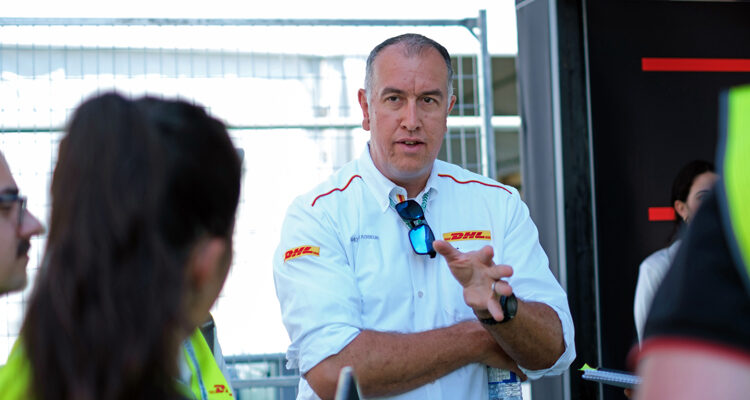Originally published in Vicarious Fall 2024
If you’ve had the pleasure of attending the Grand Prix du Montreal, you know that getting into and out of the race site can be a challenge.
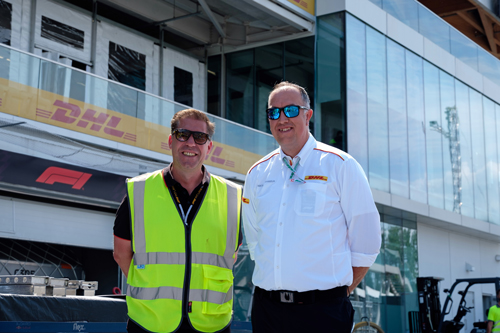
The F1 race is held on the Circuit Gilles Villeneuve, which is on the narrow Isle de Notre-Dame in the St. Lawrence River. There are only two small bridges connecting the site with the adjacent island, which then connects to the city’s transport roads and transit.
On a busy afternoon, spectator egress from the race is slow. The bridges are restricted to outbound foot traffic only, and it can take a while to leave.
Imagine, then, the feat of logistics involved in getting the circus that is the F1 itself – 10 teams, cars, equipment, volunteers, stands, merch and food – onto and off the island. That job falls partially to two seasoned logistics practitioners, Mathieu Levasseur and Christian Pollhammer. Levasseur is motorsports event manager at DHL Global Forwarding and Pollhammer is senior event logistics coordinator with F1. They gave us a tour of the F1 pit lane and explained how it all comes together on the Wednesday before the Montreal race, in June.

DHL has the contract to move all the equipment for Formula 1. The company has been doing the job for over 20 years, and just renewed its commitment with F1 for another nine-year term, so they know what they’re doing. As the ground handling agent for the race, the global freight forwarding company manages up to 1,400 tons of freight, including race cars, tires, fuel, and hospitality for all 10 teams, along with broadcasting equipment.
If you thought that at the end of every race the teams just pack up and move everything to the next venue, you’d be only partly right. The operation is much more complex than that. “Every team has like four or five or six kits and it’s always moving even off season,” Levasseur explained.
Here’s how it works: For Montreal, 100 truckloads of gear from the Miami race in May made their way north. That was supplemented by containers that were shipped across the Pacific from the Japan race in April, and then trucked from Vancouver. And, the most important equipment, the cars and critical team gear, came from Europe by airfreight on DHL’s own Boeing 777 freighter aircraft.
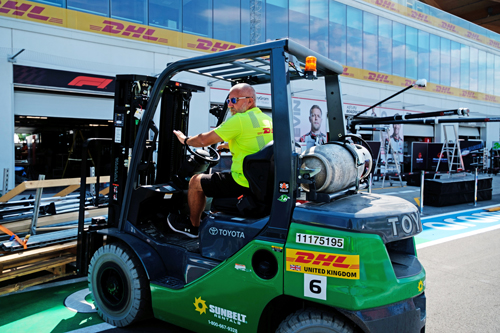
The kit that was sent from Europe had mostly just been used in Monaco, two weeks before the Montreal race. Hours after the Monaco race ended teams were on the road, returning to their European headquarters to unpack, replenish, sort and repair whatever was needed before repacking and getting the containers to DHL for the flights to Montreal.
There’s also provision for last-minute gear, which can arrive right up to the Saturday afternoon of race weekend, according to F1 rules. Polhammer said this is usually parts for the cars that have been modified, repaired and tested back at a team’s home base between races.
Wouldn’t it be easier for F1 to run the events that are physically close to each other back-to-back? “Let’s say I have Austin, Miami, Vegas, Canada, in a row,” Pollhammer said. “It’s also not good on ticket sales because when they’re all at the same time, the promoter of Miami is not happy when Vegas is right after. So, I think long-term we may go to having two North America blocks. We keep one in May and then the other one is back in October whenever we do it because we always need to look after our promoter.”
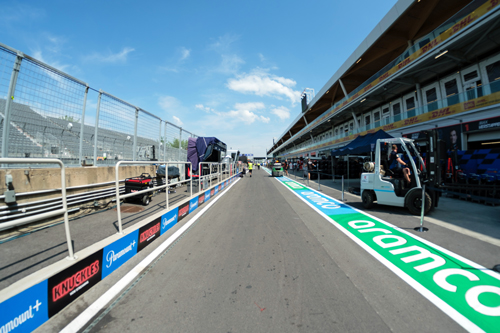
But there’s also factors like weather and hours of daylight to consider, Polhammer added. “If sunset is at five o’clock in the afternoon we are screwed. There are so many different factors involved to create an F1 calendar that sounds easy to make.”
Once everything is in place, the race can go ahead, but neither Pollhammer nor Levasseur has time to watch. Levasseur said as soon as the load-in is complete, he’s totally occupied with planning details for the next race. And then the checkered flag flies and it’s time to move out.
The timelines to get off the site after a race ends are incredibly tight, Polhammer recounted, with the norm being 10 hours. “Here, because we need to move quick, the timeframe is much shorter, but six to seven hours is the minimum they need to pack up. Much less than that we can’t do.”
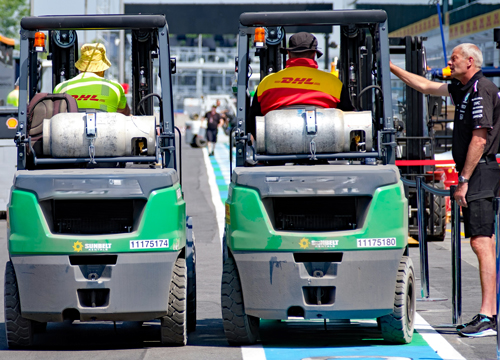
Levasseur calls the packing up process “a race after the race”. “It’s ridiculous how fast they operate just to repack it. Everybody knows which part goes in which kit,” he said.
Because the island is so small there’s no room to stage transport trucks, or store empty containers, so trucks start arriving even while the race is still going. And while the race winners are celebrating on the podium, the packing has already begun. DHL arranges for the Montreal airport sniffer dogs to come and screen the garages, and once they’re cleared teams can load the containers.
It’s the complexity that Levasseur loves. “It’s me dream job,” he said. “Montreal is a good challenge because if you can perform here and Vegas, the rest is easy.”



